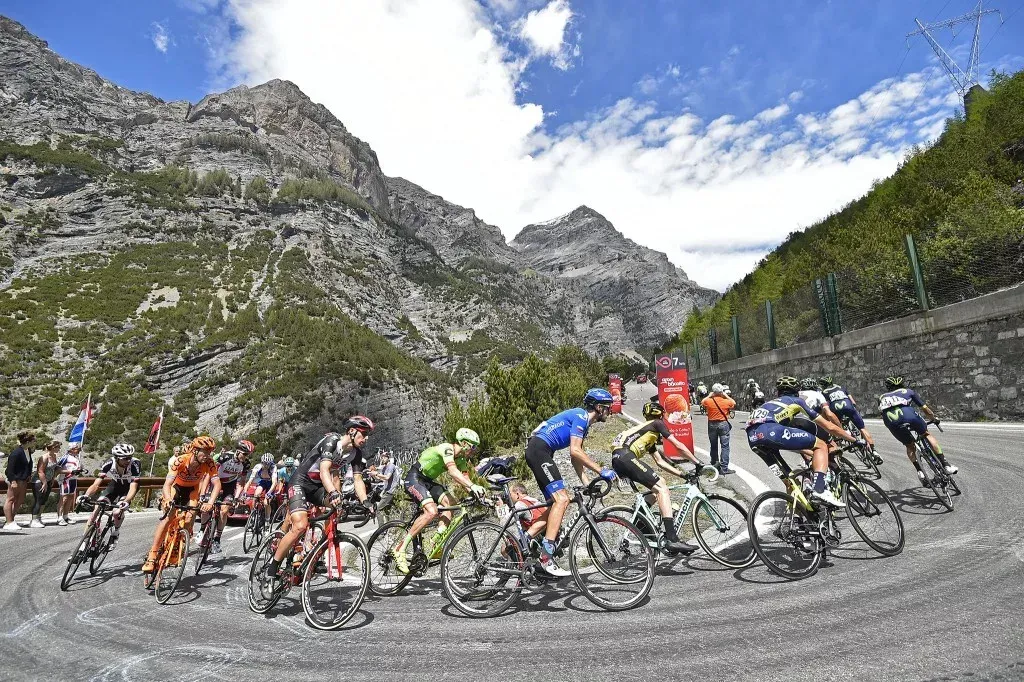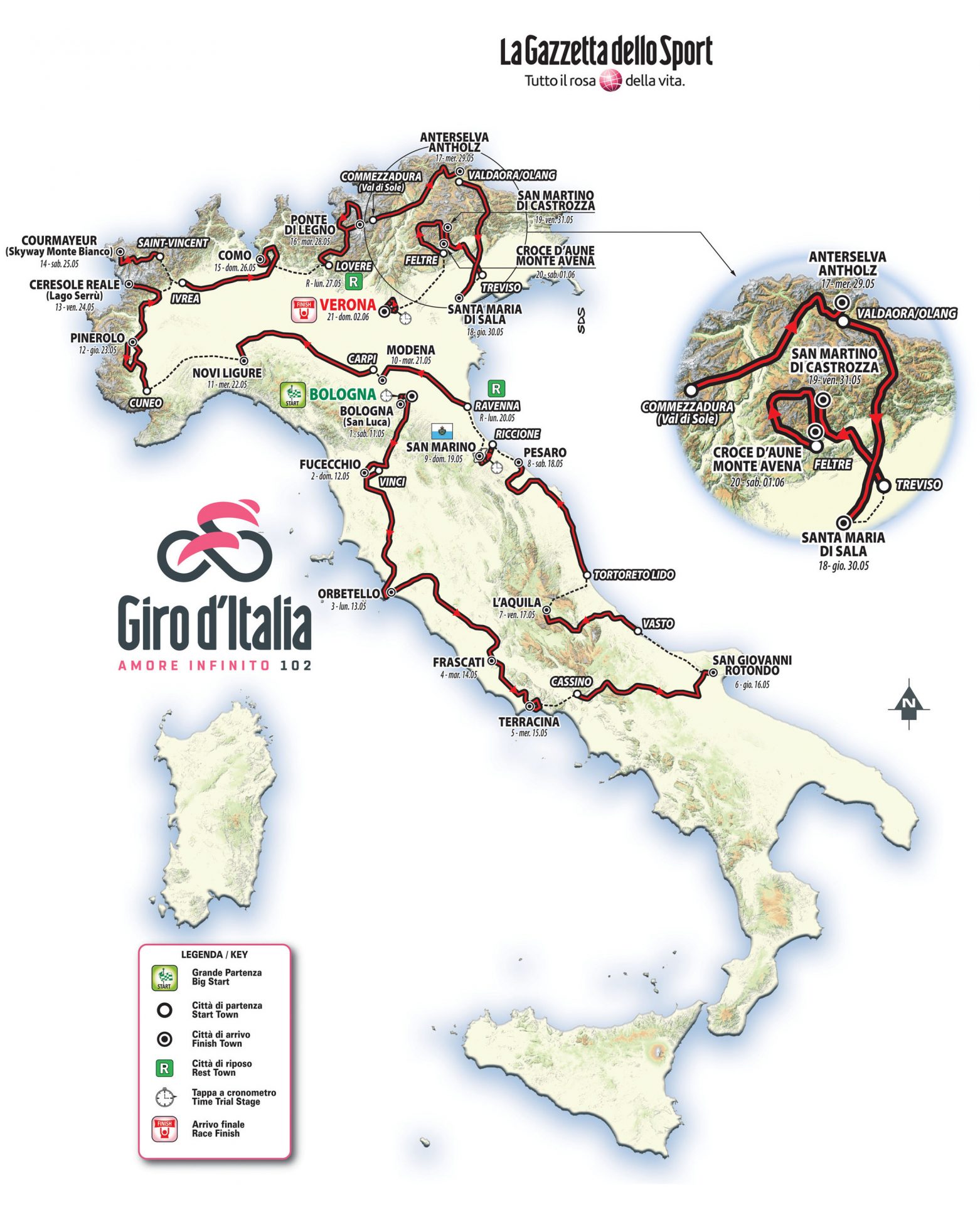The 2019 Giro d’Italia Route is All Italian, Very Mountainous and Bookended by TTs

While the 2019 edition of the Tour de France has done away with most of its individual time trialing, the 2019 Giro d’Italia route will be bookended by them. The 3,518.5-kilometer course, announced today, will also offer up seven summit finishes for the climbers.
The main criticism of the 2019 TdF route has been that it doesn’t do enough to inject excitement into the race. There’s no incitement for climbers to attack. The Giro d’Italia route looks primed to remedy that problem. Put the climbing specialists into the red with an early TT and add the threat of a finishing race against the clock and they have to attack in the mountains to not only gain back time but attempt to be in the black before the final test.
The season’s first grand tour will run from May 11 to June 2. The opening stage will be an 8.2km individual time trial in Bologna. Unlike most pancake flat prologue TTs, this one features a tough finishing climb. The course ends atop the San Luca climb, which is 2.1km at a 9.7 percent average gradient with stretches at 10-12 percent.
The first nine days will be hilly but not feature any mountains. Sprinters will have chances in stages 3 and 5. Stages 2, 3, 4, 6, and 8 will also be 200 kilometers or longer. Not the most exciting stuff for viewers.
That opening leads up to the Giro’s traditional wine-themed time trial, this year’s is stage 9 held in the Sangiovese region. The individual 34.7km test is similar to the prologue featuring some tough climbing at the end, gaining 750 meters total.
Following the first rest day, the Giro will offer up stages 10 and 11 to the sprinters. They are the definition of pancake-flat. Stages 12 through 15 are chock full of difficult climbs in Italy’s northwest.
Stage 14 is a standout at just 131km long with 4,000 meters of climbing. The route features some incredible climbs; The Verrayes, Verrogne, Truc d’Arbe (Combes), and Colle San Carlo climbs come before the summit finish at Courmayeur on the Mont Blanc.
After the final rest day, the Giro will move from Lovere to Ponte di Legno. The queen stage will be 226 kilometers with 5,700m of climbing.
Then there is a long sprinter’s stage 18, followed by the final week in the mountains. Stages 17, 19, and 20 all have summit finishes.
Stage 20 looks like torture with 193 kilometers with 5,200 meters of climbing. The Cima Campo, Manghen Pass, and Rolle Pass all lead into a finish atop Croce d’Aune-Monte Avena.
Finally, the Giro d’Italia will end in Verona with a 15.6km time trial. And once again, it won’t be a flat route, it includes a 4.5km long climb with five percent average gradient.
2019 Giro d’Italia route
- Stage 1
- Bologne – San Luca (individual time trial, 8.2km)
- Stage 2
- Bologne – Fucecchio (200km)
- Stage 3
- Vinci – Orbetello (219km)
- Stage 4
- Orbetello – Frascati (228km)
- Stage 5
- Frascati – Terracina (140km)
- Stage 6
- Cassino – San Giovanni Rotondo (233km)
- Stage 7
- Vasto – L’Aquila (180km)
- Stage 8
- Tortoreto Lido – Pesaro (235km)
- Stage 9
- Riccione – San Marino (individual time trial, 34.7km)
- Stage 10
- Ravenna – Modena (147km)
- Stage 11
- Carrpi – Novi Ligure (206km)
- Stage 12
- Cuneo – Pinerolo (146km)
- Stage 13
- Pinerolo – Ceresole Reale (188km)
- Stage 14
- Saint-Vincent – Courmayeur (131km)
- Stage 15
- Ivrea – Como (237km)
- Stage 16
- Lovere – Ponte Di Legno (226km)
- Stage 17
- Commezzadura – Anterselva/Antholz (180km)
- Stage 18
- Valdaora/Olang – Santa Maria di Sala (220km)
- Stage 19
- Treviso – San Martino di Castrozza (151km)
- Stage 20
- Feltre – Croce d’Aune – Monte Avena (193km)
- Stage 21
- Verona – Verona (individual time trial, 15.6km)






